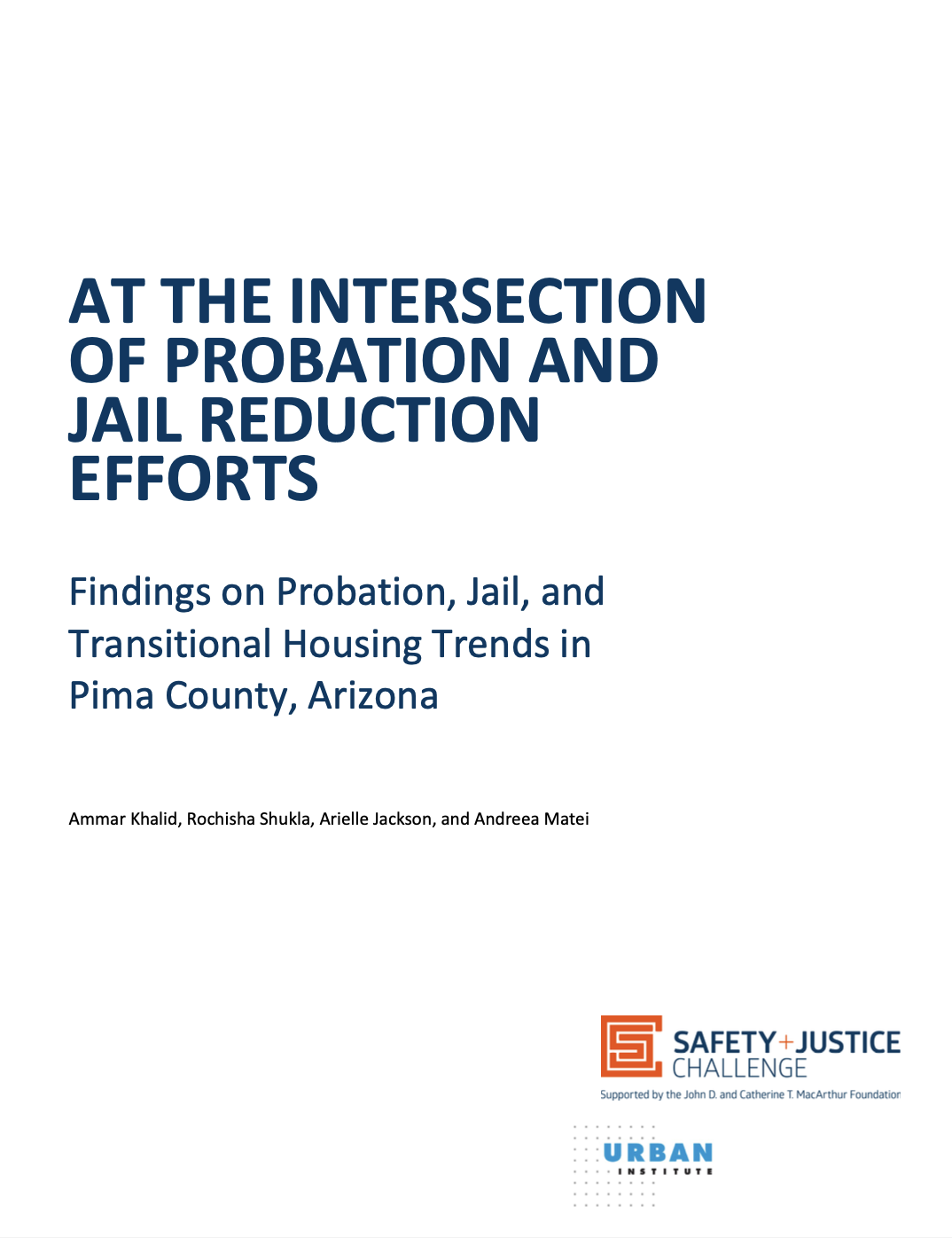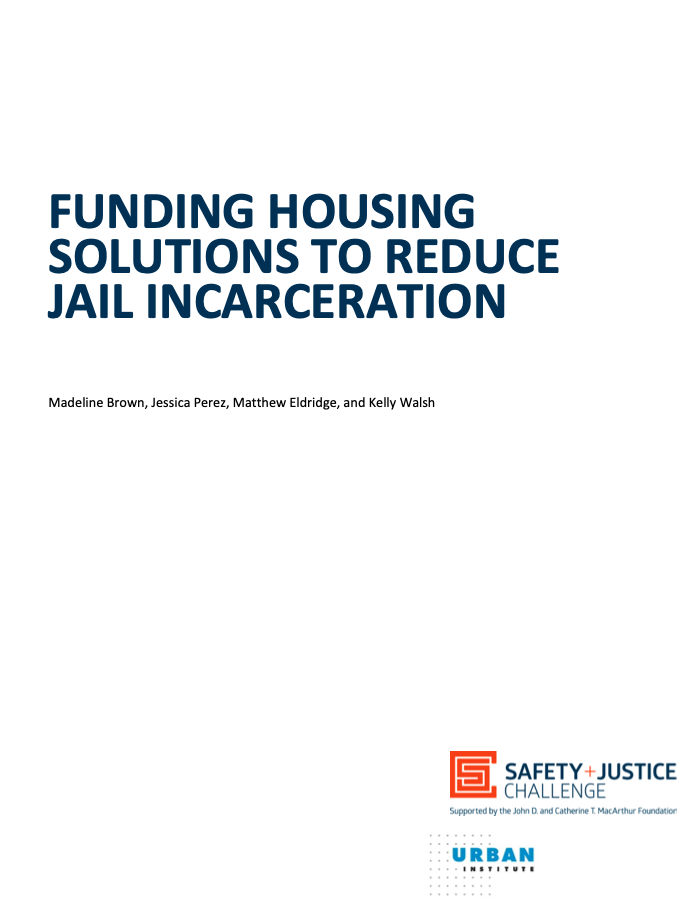Housing Interagency Collaboration Jail Costs May 18, 2022
Too often across county government there are siloes between efforts to reduce jail incarceration and efforts to house people. But a recent report by the Urban Institute funded by the Safety and Justice Challenge shows how cross-governmental collaboration can break down these siloes and address historic injustice which has contributed to the jail-homelessness cycle.
The report is based on learnings from three private roundtables we held in 2020 with practitioners, people with lived experience of jail incarceration, and subject matter experts across housing, behavioral health, and criminal justice. The purpose of the roundtables was to understand how gaps and lack of coordination prevent large-scale systems change in these areas. Specifically, conversation focused on analyzing how existing funding streams limit housing options for people with criminal justice involvement.
It is important for counties to understand the background of structural and institutional racism that connects housing and criminal justice challenges. Decades of disinvestment and exclusionary zoning have created barriers for people of color to live in some upper and middle-class neighborhoods. Even when affordable housing is created it often ends up in distressed and under-resourced areas. Disparate racial outcomes in our housing and criminal justice systems persist in part because solutions to racist histories are often focused either on housing or the criminal justice system, not the relationship between the two.
Counties are in a position to help bridge the housing and justice fields. Housing instability can both be a result and a cause of interaction with the criminal justice system. People with serious mental illness and substance use disorders, people with previous incarceration, and people in moments of transition (such as aging out of foster care)are all more likely to experience housing instability. an This diversity of factors calls for program and policy solutions that can minimize the risk of experiencing the justice system–housing instability cycle. Any effort to improve housing stability and reduce jail use must intentionally align the specific needs of the people being served and the activities pursued.
The report settled on the following four constructive approaches to addressing the cycle:
- Provide Housing Without (or with few) Conditions
The Housing First approach is an evidence-based concept grounded in the idea that people need housing before they can begin working on other challenges. Housing is a stabilizing platform that helps people overcome challenges in other aspects of their lives (e.g., substance use disorders, lack of employment). Housing First recognizes this and therefore does not condition housing on the achievement of sobriety, treatment, employment, or other milestones. Evidence shows this practice works.
- Support the Whole Person to Achieve Housing Stability
Housing stability is not just about housing. Supportive services linked to housing can help improve outcomes for people with mental health and substance use disorders, both of which can contribute to and be exacerbated by jail stays. Each year 2 million people with mental illness are booked into jails. Of those 2 million, 75 percent have substance use disorders. In many cases, people receive their first mental illness diagnosis in a correctional facility. Jails should not be substitutes for robust community-based behavioral health services. Instead, counties can shift resources to create housing solutions that provide holistic approaches and services to address underlying challenges such as mental illness and homelessness.
- Fund Multiple Pathways to Promote Housing Stability
Just as there is no single cause of housing instability, there is no single housing solution that can meet all residents’ needs. Counties should pair structured, clearly defined programs, such as permanent supportive housing, with flexible funds that can be used to solve a wider variety of underlying challenges for people who cycle in and out of jails and housing.
- Plan for Release before Release
Deflection from the criminal justice system should be the guiding principle for local policymakers, however, no community has eliminated the use of jails. The millions of people released from jail every year, many more than once, face unique challenges and require supports that promote housing stability upon release. Landlords and property owners discriminate against applicants who have any degree of justice-involvement. Public housing authorities may temporarily or permanently exclude people with some types of criminal histories, using their broad discretion when crafting screening and eviction policies. Where deflection and diversion are not successful, counties and local criminal justice and housing actors can embed housing planning at intake or other points before release for those with the highest needs.
Bridging Funding Gaps
To date, housing as jail diversion has attracted limited attention and investment. This is caused partly by the siloed nature of existing traditional funding streams and the inherent risks of experimental and innovative solutions. Strained state and local budgets present another significant barrier to addressing housing as jail diversion entirely within the traditional funding paradigm. However, the pandemic-spurred urgency to reduce jail populations, new federal funding streams, and continued growth and maturity in the innovative funding marketplace have created an opportunity to invest in solutions. We encourage counties to explore opportunities for impact investment to bridge gaps by tapping new funding that is faster, more flexible, and potentially more conducive to testing and scaling innovative solutions like these.
Actionable strategies are needed to improve coordination across the sectors, increase housing options at the point of diversion and reentry, and leverage the investments to make this happen. Counties and cities can help the housing and justice sectors to help people avoid justice system involvement in the first place, support successful returns to their communities, and target resources toward housing stability.











